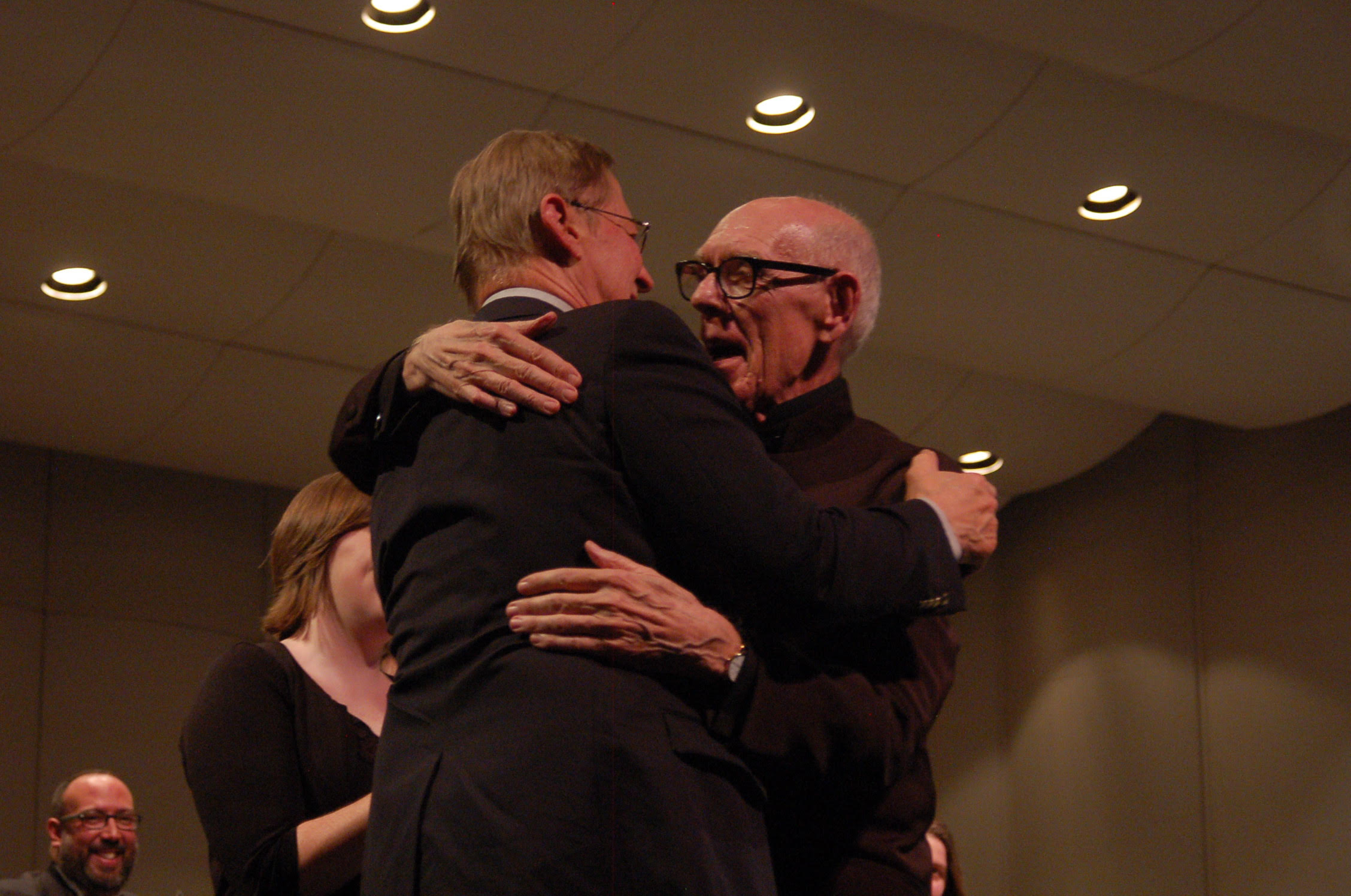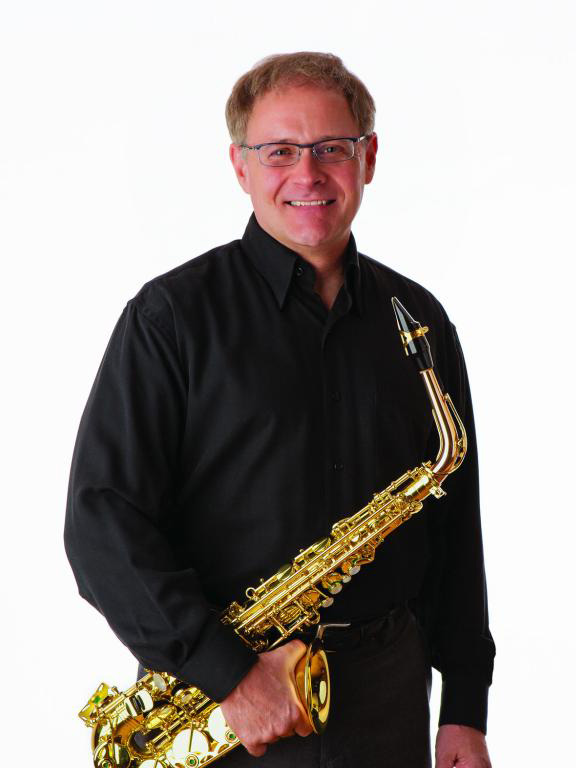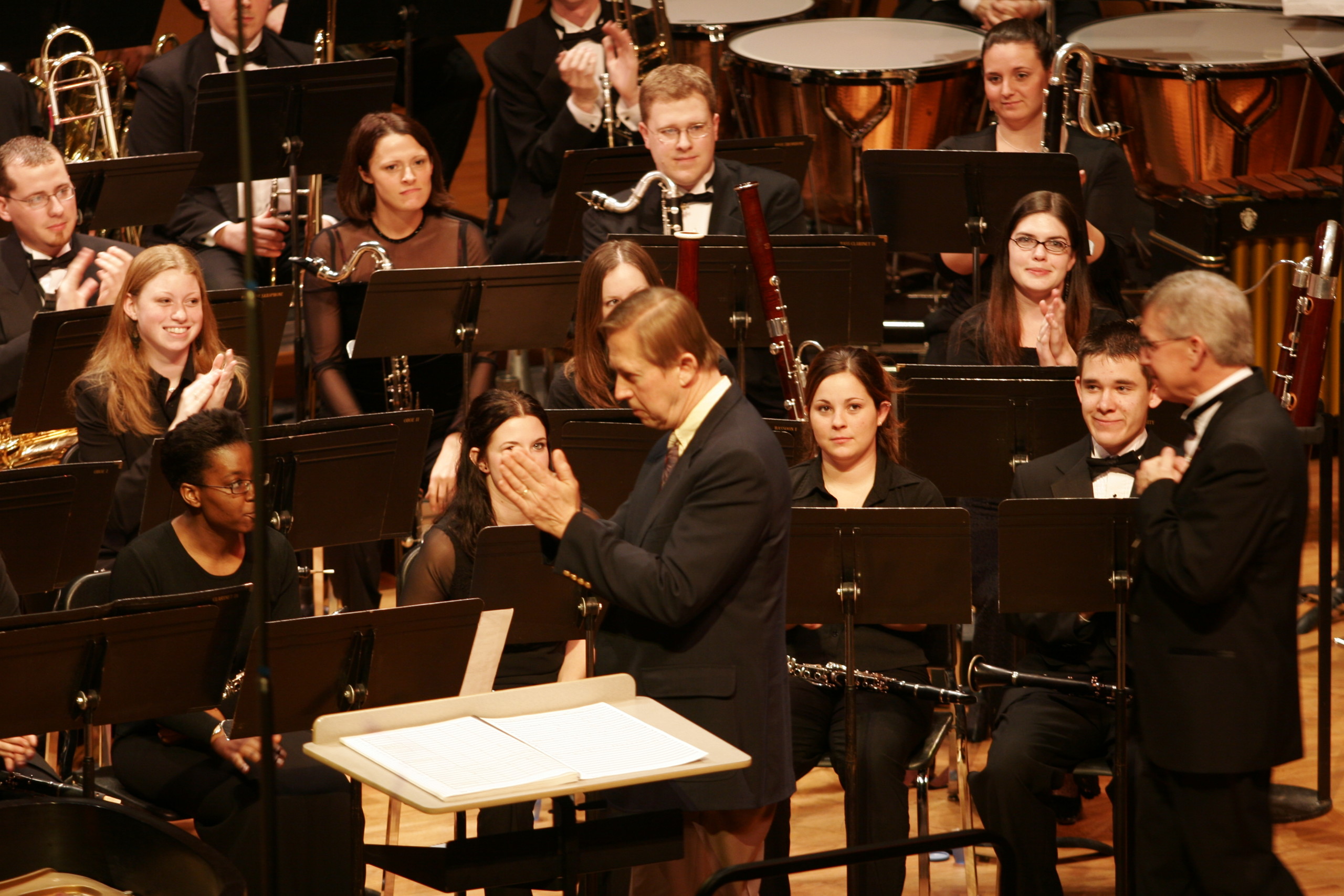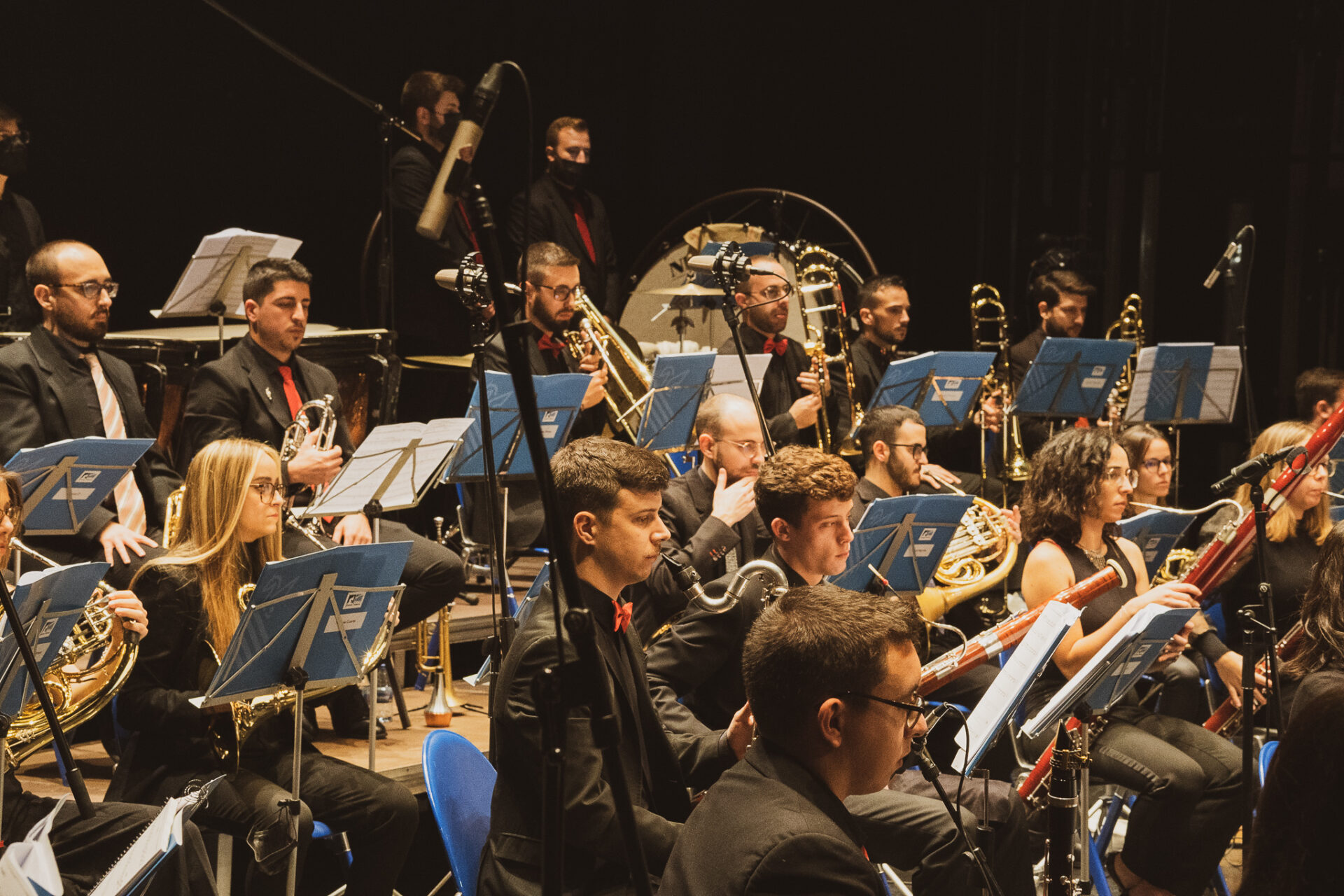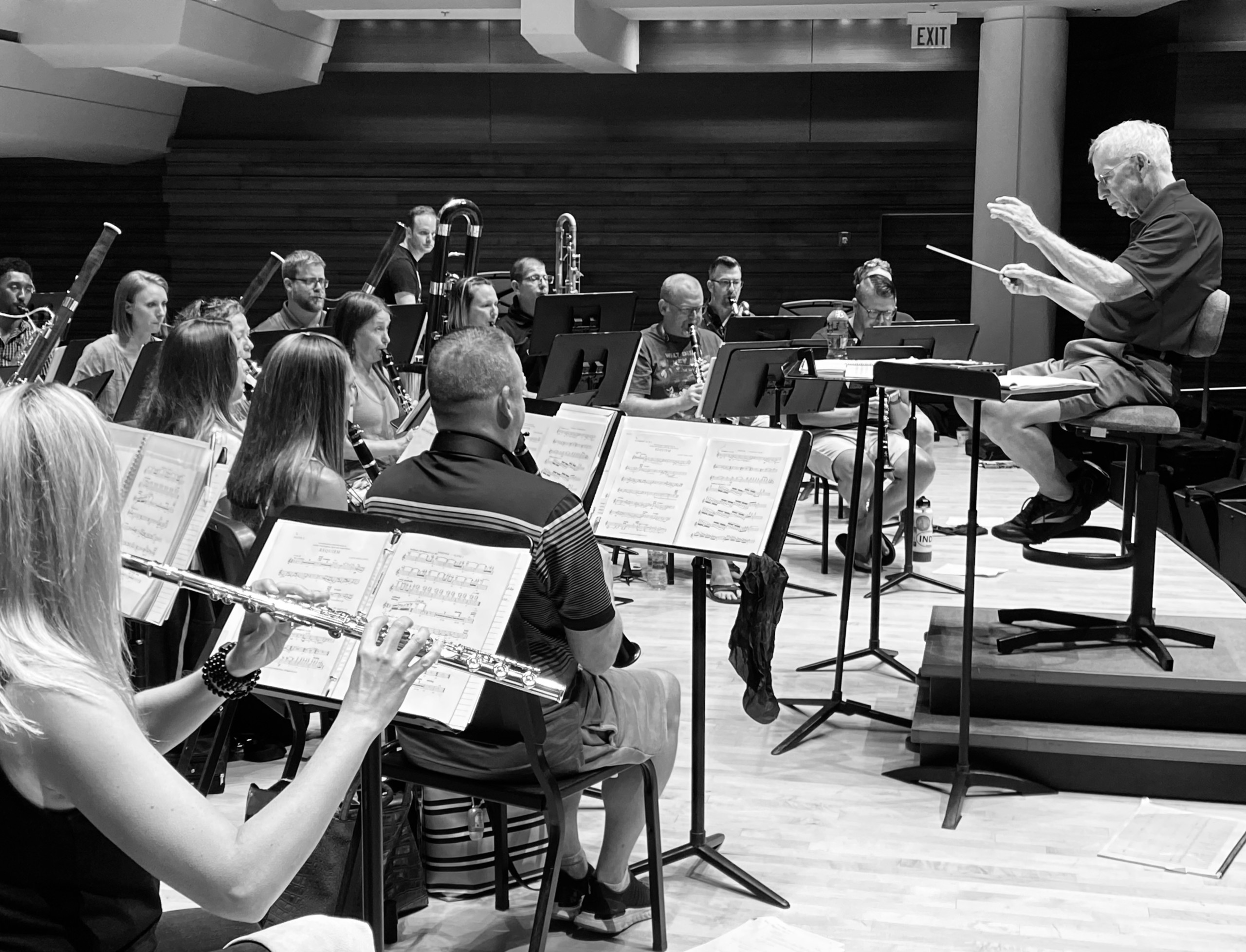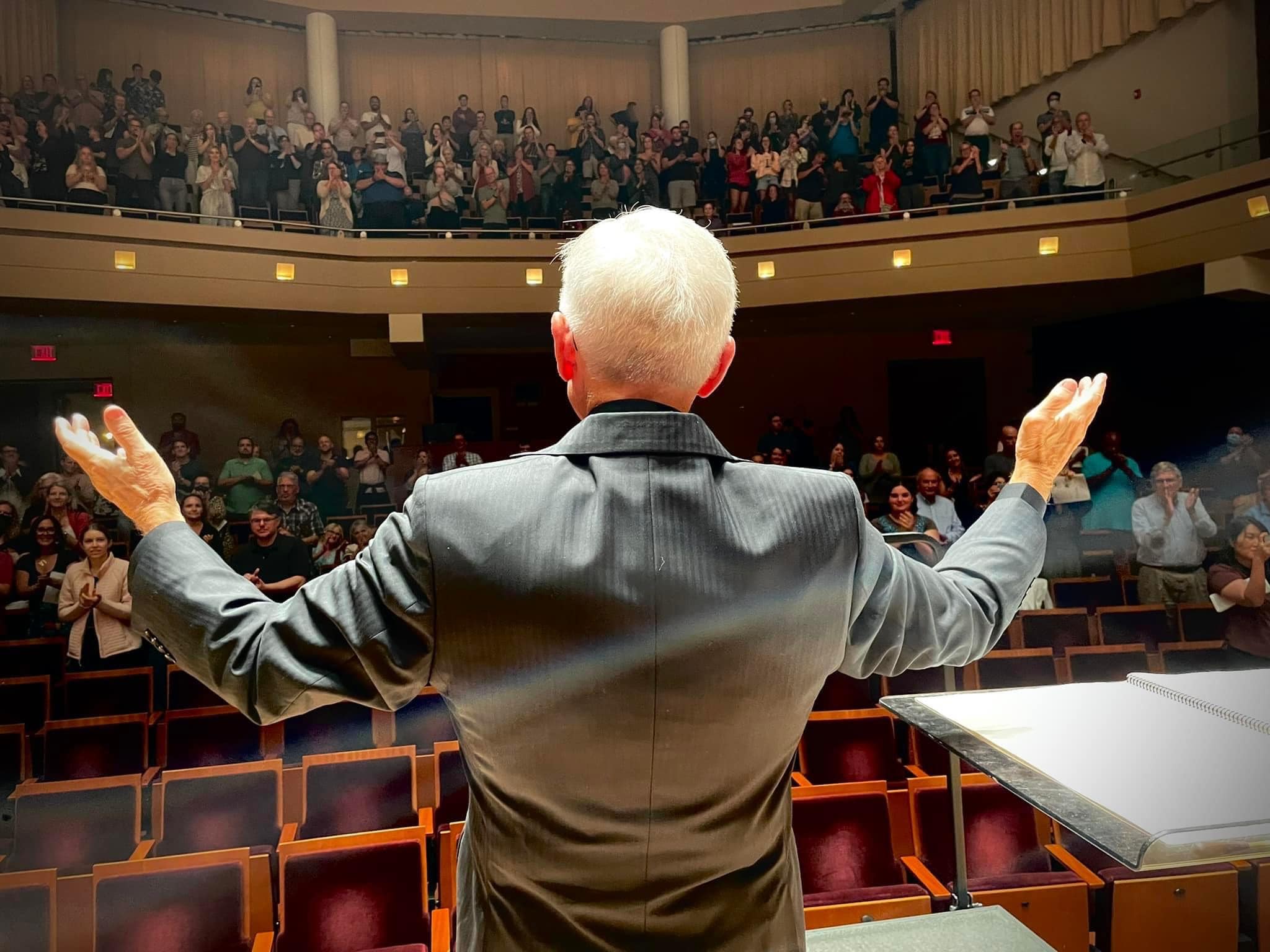From the Maslanka Archive features media and stories of David’s life and work. Did you work with David? Please consider contributing material.
It’s time for another edition of From the Maslanka Archive. We are actively building the Archive, but it won’t be ready for public viewing for a while. In the meantime, we wanted to show off some great items we’ve already collected.
We also wanted to inspire YOU to help grow the collection. We would love to feature you in an upcoming edition! Simply provide us with photos, video, audio, or stories of your time together and you may find them on the front page.
This week, we are excited to feature a letter written by Gregg Hanson entitled Moments. Moments recounts Gregg’s memories of David, his music, and the relationship the two shared for over twenty-five years.
While director of bands at the University of Arizona, Gregg performed nearly every major piece of David’s and commissioned several. He is responsible for commissioning perhaps David’s most important work, the 1996 Mass. Gregg invited David back to Tucson for the final time in 2016 to help prepare a performance of Symphony No. 2 for his retirement concert. The following is an open letter Gregg wrote to commemorate David’s passing.
My dear friend and colleague David Blackinton, then Director of Bands at Brigham Young University, sent me a cassette tape in the spring of 1987 and included a note saying, “you’ve gotta hear this.” He had been at the National Conference of CBDNA a few months before where he heard the premiere performance of David Maslanka’s Symphony No. 2 conducted by John Paynter. The semester had ended for me at the University of Utah and I was taking what I thought was a well-deserved break on the deck of the pool at my condo. As I began to bake in the sunshine, I popped the cassette into my Walkman and entered Maslanka World. I was not aware at that moment, but my musical and creative life would change forever.
I was drawn to David and his music in an insatiable way. In the spring of 1992 we met, and the following spring was his first visit of 23 to the University of Arizona Fred Fox School of Music. I learned over time how to approach his music which was unlike any wind band music from any other composer. It is filled with dramatic contrasts, extreme orchestrations, unique combinations of stylistic compositional styles, and most of all, a quality that reaches directly to the soul. My students and I grew extensively as we traversed the massive landscape of his music. Premiers, recordings, and tours (including his first exposures in Europe and China) ensued as our partnership expanded.
When I made my decision to retire in the spring of 2016, it was the end of a logical and deeply meaningful relationship with David and of course, my program would include the Symphony No. 2. It was, after all, my first exposure to his music and my last concert at U of A. I opened with the Dvorak Serenade in D Minor, featuring my colleagues of the applied wind faculty followed by a work composed for the occasion by my dear friend, David Whitwell… and then the Symphony.
David spoke at the concert as did I. I wanted the occasion to be intimate. When I took my final bow with David, I walked off stage with the feeling of accomplishment and the full circle of my love and passion for my career and David’s friendship and music in it.
As is frequently the case, rehearsals are sometimes more magical than the performance. I had had many of those experiences before but the rehearsal the evening before the concert was an electrified affair, and, as an open rehearsal, many colleagues and former students were in attendance. There was one “moment” which I shall never forget. I spent a lot of time over the years hoping to please David – not an easy task – and for myself to connect to the music in an indescribable way that involves “leaving” your conscious mind and entering into what he called “the dream space” which transcends conscious awareness. As it happens, one of those moments happened in that rehearsal. Everyone in the room knew it on some level. I stopped the music and there was a long silence in the room. As I looked at David, he had tears in his eyes and was overcome with emotion. There was nothing much that needed to be said. The connection with him, his music, and my students had been made. We had accomplished the intent of this music – the greatest goal of all artistic endeavor. It is not initiated by one person but is the collective energy of everyone present in equal measure. It’s a “moment.” When the great British actress, Helen Hayes, was asked by a young interviewer what it was like to have had such a magnificent career, Ms. Hayes replied, “I’ve had moments, dear.”
There was only one David Maslanka as is the uniqueness of every great artist. In a seminar during one of his many visits to campus, a graduate student asked him, “Do you think your
music will last?” He smiled and answered that he was compelled to write music and that he threw it into the universe without control over what would happen to it. It is our responsibility to make sure it lasts forever. I know of nothing more powerful in the wind band repertoire than David’s music.
A very special thanks to Gregg Hanson for sharing this letter with the world.
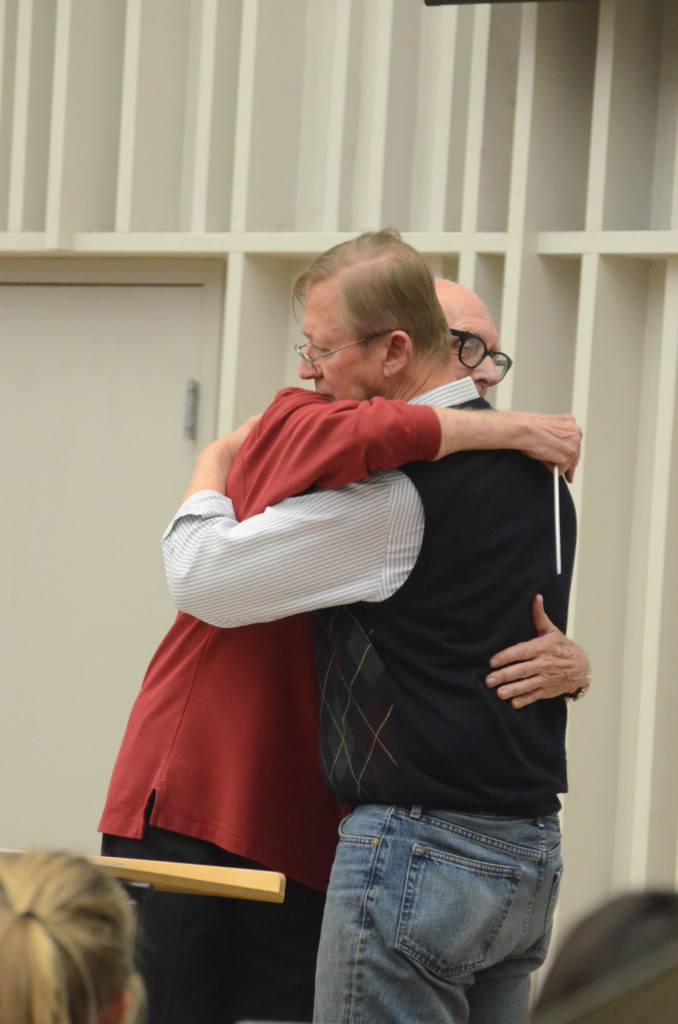
Would you like to be featured in an upcoming edition of From the Maslanka Archive? It’s easy! Please send us anything you have (picture, audio, video, concert poster, concert program, correspondence with David, etc.) and we will feature you!
